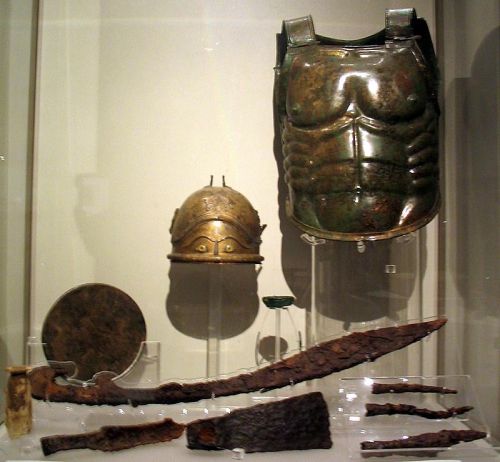This doesn't change the fact that:
- Nor the Roman, nor the Huns ever built any muscled armor using iron or steel.
- It was absolutely impossible modelling the anatomy of a muscled armor using iron.
- The artistic knowledge and culture needed to sculpt a human breast in a realistic and natural shape, was not part of the Hunnic cultural background, as clearly shown by the pics of the previous posts.
- So, the Huns didn't own the technology, the knowledge and the cultural interest in producing anything similar to a muscled armor. Their cultural landscape and their artistic language was not the the same language that allowed the Greek-Roman world to build this kind of armor:
- Writing that the Huns used muscled armors, made by them using iron or bronze, it's so tragically idiotic that it's meaningless even talking of it, and actually I'm still asking myself why I'm here repeating these banalities.
(I'm sure that today in Europe, even the modern heirs of the 23rd SS, would agree with me, in this case!)










 Reply With Quote
Reply With Quote




















